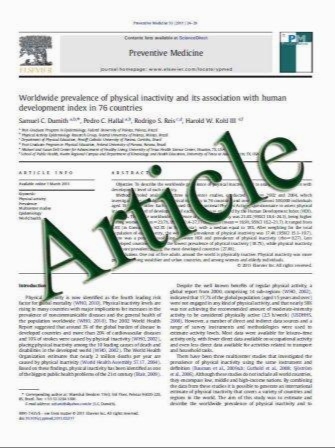Change in left ventricular geometry during antihypertensive treatment in children with primary hypertension
- نوع فایل : کتاب
- زبان : انگلیسی
- مؤلف : Joanna Śladowska-Kozłowska & Mieczysław Litwin & Anna Niemirska & Aldona Wierzbicka & Zbigniew T. Wawer & Roman Janas
- چاپ و سال / کشور: 2011
Description
The pattern of the left ventricle (LV) has important significance in adults with hypertension. The aim of the present study was to analyze changes and determinants of LV geometry after 1 year of antihypertensive treatment in children with primary hypertension (PH) in relation to metabolic abnormalities and anthropometrical parameters. In 86 children (14.1±2.4 years) with newly diagnosed PH, LV geometry and biochemical parameters before and after 12 months of standard antihypertensive therapy were assessed. At baseline, normal LV geometry (NG) was found in 42 (48.9%), concentric remodeling (CR) in 4 (4.6%), concentric hypertrophy (CH) in 8 (9.3%), and eccentric hypertrophy (EH) in 32 (37.2%) patients. The prevalence of NG in patients with severe hypertension was significantly lower than in patients with ambulatory hypertension. There were no differences in dipping status in relation to LV geometry. Patients with CH and EH were more viscerally obese than patients with NG. Patients with CH had higher diastolic blood pressure in comparison with EH patients (p<0.05). The main predictor of relative wall thickness (RWT) was the triglycerides to high density lipoprotein cholesterol (TG/HDL) ratio (R2=0.319, β= 0.246, p=0.004). Patients received 12 months of antihypertensive treatment, either lifestyle modification only (n= 37) or lifestyle modification plus antihypertensive medications (n=49) if severe ambulatory hypertension or target organ damage were present. After 12 months of treatment the prevalence of EH (37.2% vs 18.6%, p=0.003) decreased but prevalence of CH did not change. Patients in whom RWT decreased also decreased waist circumference and TG/HDL; the main predictor of RWT decrease was a decrease of the TG/HDL ratio (β=0.496, R2=0.329, p=0.002). In adolescents with PH, LV geometry is related to central obesity and insulin resistance. Decrease of abdominal obesity and insulin resistance are the most important predictors of normalization of LV geometry, however CH has lower potential to normalize LV geometry.
Pediatr Nephrol DOI 10.1007/s00467-011-1916-8 Received: 12 February 2011 / Revised: 28 April 2011 / Accepted: 3 May 2011


